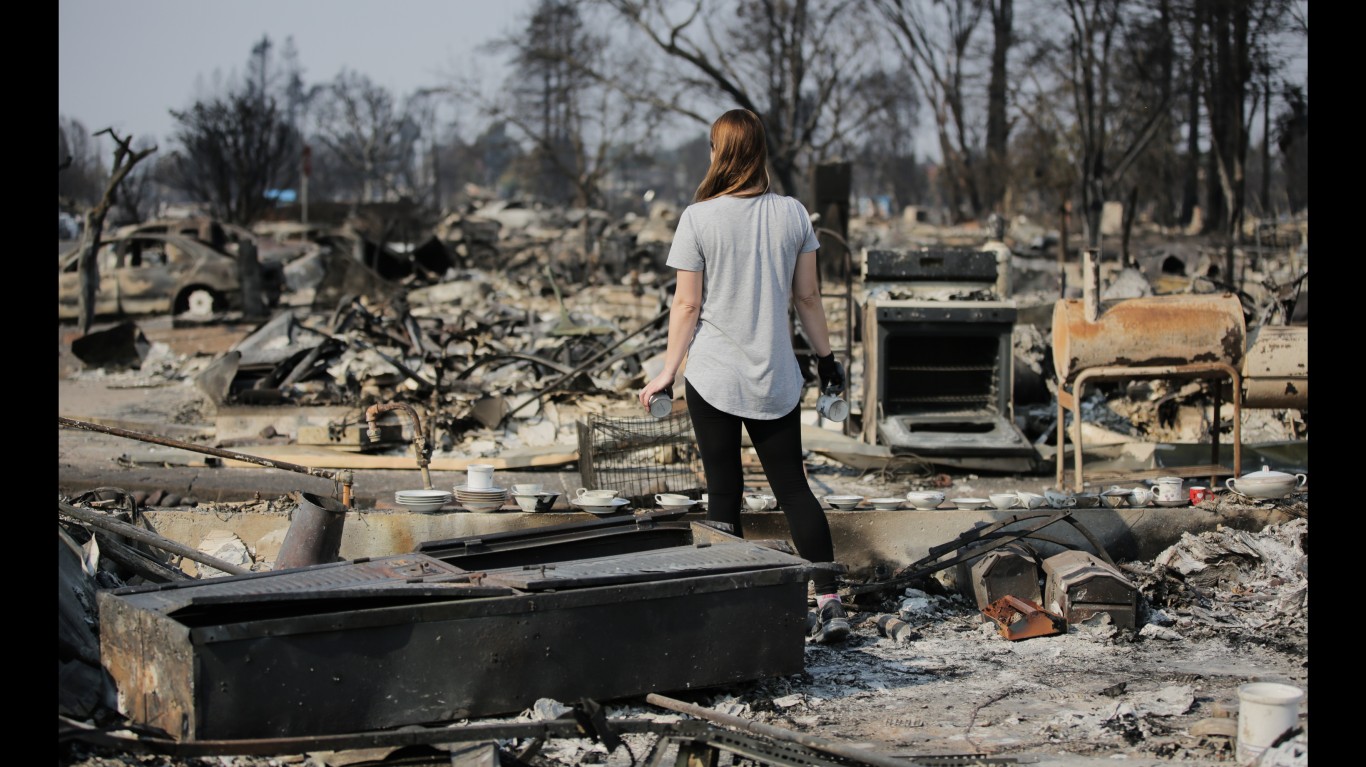Infrastructure
Did PG&E Just Pull the Rug From Under Elliott and Pimco?

Published:
Last Updated:

PG&E Corp. (NYSE: PCG) on Friday announced that it had reached an agreement with victims of 2017 and 2018 Northern California wildfires. The settlement is valued at $13.5 billion and must still be approved by the federal bankruptcy court and by California governor Gavin Newsom.
The company’s previous offer to settle victims’ claims totaled $8.4 billion and was easily topped by an offer from bondholders led by led by Paul Singer’s Elliott Management and investment management firm Pimco. Under the bondholders’ plan, shareholders receive virtually nothing while victims and bondholders would get more than 95% of the equity in the company that emerges from bankruptcy. The value of this deal was — surprise — $13.5 billion.
PG&E already has agreed to pay $11 billion to reimburse insurance companies for $11 billion already paid out in claims from policyholders. The company also has reached a $1 billion agreement to reimburse local governments. Friday’s announced deal also resolves all claims arising from the 2017 and 2018 fires, including the 2017 Tubbs Fire, as well as all claims arising from the 2015 Butte Fire and 2016 Ghost Ship Fire in Oakland. PG&E has never acknowledged fault for either the Tubbs or Ghost Ship fires.
Company CEO Bill Johnson commented on the latest proposal:
From the beginning of the Chapter 11 process, getting wildfire victims fairly compensated, especially the individuals, has been our primary goal. We want to help our customers, our neighbors and our friends in those impacted areas recover and rebuild after these tragic wildfires. … With this important milestone now accomplished, we are focused on emerging from Chapter 11 as the utility of the future that our customers and communities expect and deserve.
Under PG&E’s new plan, the company that emerges from bankruptcy will issue new stock to a trust that will then sell the stock to third parties for cash that will be used to compensate victims. The plan also promises existing stockholders some return on their investment while the competing plan from bondholders essentially wiped out existing shareholders.
Elliott Management and Pimco have not yet indicated how they will respond or if they will respond at all. Presiding Bankruptcy Judge Dennis Montali said in an October ruling allowing the bondholders’ plan to go forward that “the parties most deserving of consideration” in the company’s bankruptcy were the victims of the wildfires. At the same time, the judge denied requests to consider other plans.
In that ruling, Montali rejected PG&E’s argument that considering an alternative to the company’s plan may threaten PG&E’s chances of exiting bankruptcy in time to meet the June 2020 deadline for inclusion in the state’s $21 billion Wildfire Fund. That fund, which is to be created from annual ratepayer and shareholder contributions, is designed to compensate future wildfire victims and cap company (and shareholder) exposure to liability from a fire. All state utilities providers are required to contribute, but PG&E must exit bankruptcy by June in order to be eligible to draw on the Wildfire Fund in the future.
In its Friday announcement, PG&E noted that the new settlement plan keeps the company “on track to obtain regulatory approval and Bankruptcy Court confirmation of its Plan” in time to meet the June deadline.
There’s been no response from Elliott or Pimco, but it’s still early Monday morning. There’s no doubt that the agreement announced Friday severely crimps their plan to acquire PG&E at a bargain price.
PG&E stock traded up about 23% about two hours before the opening bell Monday, at $11.90, after closing at $9.65 on Friday. The stock’s 52-week range is $3.55 to $27.38, and the 12-month consensus price target is $12.56. At Friday’s closing price, the utility’s market cap was $5.1 billion.
Credit card companies are pulling out all the stops, with the issuers are offering insane travel rewards and perks.
We’re talking huge sign-up bonuses, points on every purchase, and benefits like lounge access, travel credits, and free hotel nights. For travelers, these rewards can add up to thousands of dollars in flights, upgrades, and luxury experiences every year.
It’s like getting paid to travel — and it’s available to qualified borrowers who know where to look.
We’ve rounded up some of the best travel credit cards on the market. Click here to see the list. Don’t miss these offers — they won’t be this good forever.
Thank you for reading! Have some feedback for us?
Contact the 24/7 Wall St. editorial team.